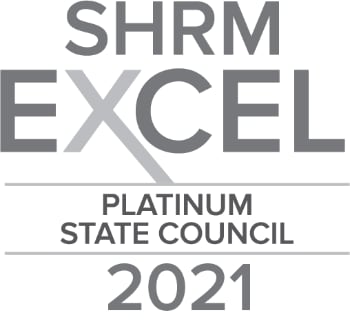This blog post is contributed by our partners at Ice Miller.
All of us have had that moment when we desperately want to fire off a brutally honest email about how we feel. We know how good it would feel to tell someone how things really are. Then, most of us think about it, maybe sleep on it, and revise the email.
Some of us don’t. An employer recently learned a painful lesson in federal court about the impact of that one emotional email – which happened to be a communication regarding accommodating a disabled employee.
What is the “interactive process”?
Since the amendments to the Americans with Disabilities Act (ADA) went into effect several years ago, most human resources professionals have become familiar with the phrase “interactive process.” In the words of one court, the interactive discussion with a disabled employee concerning reasonable accommodations has become “the heart of the ADA’s process.”1
When done correctly, the interactive process has significant potential benefits when an employer faces litigation. An employer that engages in the interactive process in a “good faith” way may avoid punitive and other damages (see EEOC Enforcement Guidance Reasonable Accommodation and Undue Hardship under the Americans with Disabilities Act, No. 915.002 (Oct. 17, 2002)).
An employer shows good faith in engaging in the interactive process by a number of things it does with regard to its interactions with a disabled employee. Most courts find the following factors to be relevant to whether the employer acted in good faith:
- Meeting with the employee who is requesting an accommodation
- Requesting information about the individual’s condition and work limitations
- Asking the employee what the employee specifically wants by way of accommodation
- Showing indications of having fully considered the employee’s requests
- Offering and discussing available alternatives when the requests are too burdensome
You will note the important thread that connects each of these factors is a continuing dialogue with the employee.
But an employer’s obligation to communicate with the disabled employee does have limits. If the interactive process breaks down, the courts look for the cause of the breakdown. If the breakdown is the employee’s fault, then the employer is not liable for the failure of the interactive process.
For example, if an employee refuses to provide essential medical or other information to the employer, then the employee is responsible for the breakdown of the interactive process.2 Along those same lines, if an employee insists on a single, unreasonable accommodation, such actions may be considered to cause the breakdown of the interactive process.3 But note, the employer in these situations maintained an open dialogue.
How not to engage in the interactive process (and the trouble a single email can cause)
John Cloutier was a pilot for GoJet Airlines. He sued the airlines for alleged violations of the ADA (among other things) after he was diagnosed with diabetes. He was eventually fired when he exhausted his leave of absence. After an unproductive email battle between Cloutier and his manager, everybody was frustrated. Cloutier and his manager surely engaged in a “process,” but it was not likely very “interactive.”
The result was that the process did not move very quickly, nor very effectively, to a productive conclusion. In response to what was perceived to be a “non-responsive” email from Cloutier, the operations manager had enough. The operations manager sent an email to the management team stating the following, “I do not want you to reach out to this man again either via phone or e-mail…. After his [leave] ends, our intent is to terminate his employment….”
That is the lesson in how not to conclude the interactive process – that email never goes away.
While the court did not condone Cloutier’s non-responsiveness, it also faulted the operations manager’s outright refusal to communicate. Ultimately, the court concluded it could not decide whether either party was most responsible for the breakdown in communications and held that a jury must decide. Essentially, the court pronounced a pox on both houses.
“On the one hand, Cloutier was undoubtedly slow in responding to e-mails…. On the other hand, … just one day after Cloutier [communicated to the employer, the operations manager] instructed [the management team] not to contact Cloutier again….”4 That is not the position any employer wants to be in when faced with litigation.
So, despite how good it may feel in the moment to fire off an email about how frustrated you are with an employee, it simply is not a good idea. That email will live on long after the emotion is gone.
Instead, keep the lines of communication open, especially when it’s frustrating. Think strategically, not emotionally, about your communication. By doing so, you not only benefit from a legal standpoint, you may also actually solve a problem.
1 Barnett v. U.S. Air Inc., 228 F.3d 1105, 1113 (9th Cir. 2000)
2 Ward v. McDonald, 2014 WL 3906299 (D.C. Cir. Aug. 12, 2014)
3 Whelan v. Teledyne Metalworking Prods., 226 F. App’x 141 (3d Cir. 2007)
4 Cloutier v. GoJet Airlines, LLC, Case No. 16 C 1146 (N.D. Ill, May 15, 2018)
___________________________________________________________________________
For more information, contact Paul Sinclair, partner at Ice Miller, or another member of our Labor, Employment and Immigration Practice.
This publication is intended for general information purposes only and does not and is not intended to constitute legal advice. The reader should consult with legal counsel to determine how laws or decisions discussed herein apply to the reader’s specific circumstances.






